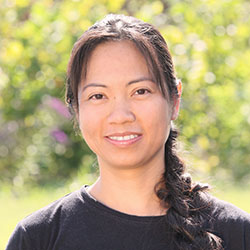Context
Constructivist learning environments create rich experiences that encourage learning. Teachers interact with students by seeking their questions and points of view. The key is to structure the learning environment such that students can effectively construct new knowledge and skills related to their academic and personal growth. Our second goal is to improve students’ argumentation skills and foster their development of well-reasoned, supported arguments.
Step-by-Step Implementation
- Pose problems of emerging relevance to class. On the first day of my psychology in teaching class, I always start with a casual chat with my students about graduate school. I tell them to be brutally honest so that I can provide them the best learning experiences that is worth their time and money. One of my students blurted out in class that most graduate courses are “washed.” After hearing this, it dawned on me that some students do not see the value of what they are about to learn in my course. This prompted me to look into how my students will learn to construct meaning from information and experience. I linked new information with existing knowledge by using real life experiences of my students as points for discussion. I connected the final paper with the discussion forums to improve the students’ internalized knowledge. Students are asked to identify an issue in their own K-12 classroom, review the literature on educational theories, and create an instructional design to improve K-12 student learning. This time, the discussion forums were relevant to them. They are given the autonomy to write a paper about designing instruction based on a combination of educational theories of their judgment.
- Structure learning around primary concepts. Teachers enhance learning when they develop lessons to assist students to link new information with knowledge in memory. Information that is meaningful, elaborated, and organized promotes effective information processing and enhances learning. For my students not to be overwhelmed by the scope of the course, information is presented by networks of ideas. The sequence of lessons gradually introduces them to the topics in a logical manner. I use advance organizers to help students connect new material with prior learning. This also helps me direct my students’ attention to important concepts to be learned, highlight relationships among ideas, and link new material to what they already know. In addition, I review prior knowledge before I introduce new information. Factual information to be learned is elaborated by providing visual drawings and written details. The phases of learning are established from preparation, acquisition, performance and transfer of learning. For example, when discussing the topic of getting started with a research project, I start with: 1) whole class discussion, 2) followed by small group discussion, 3) individual worksheet reflection, 4) online discussion forum to share individual reflections, 5) go back to whole class discussion followed by small group discussion, 6) individual reflection for the student to create or state a set of possible research questions.
- Seek and value students’ points of view. The data from teaching evaluations are like the yin yang of teaching. The positive and negative comments complement each other to improve my teaching. At the end of the semester, I get this thrill of “can’t wait to learn about what my students do not like about what way I taught the course.” Secretly, I wish for more negative comments. Perhaps, the most brutal and painful the comments, the better they are for me to improve my teaching. Sometimes, pain is the best teacher. The "negative comments" of my students serve as points for improving my teaching. They fuel my energy to be a better teacher. So next time you receive some harsh comments, it will bruise your ego a little bit but it will make you a better teacher if you process the experience very well.
- Adapt curriculum to address students’ suppositions. Course requirements are designed to fit into what they currently do. Students choose a topic relevant to what they (want to) do and based on their aspirations in life. The discussion forums and final projects are intentionally designed to intensify professional development, as well as personal growth.
- Assess student learning in the context of teaching. Ongoing formative assessment engages the students throughout the course. Each assessment process served as a mechanism to move to the next learning task, as well as to improve student learning. Full criteria, or scoring rubrics, communicate my expectations, and are available to students on the first day of class.
Effectiveness
I implement these steps in all the courses I teach. It is a type of holistic teaching that does not require sacrificing content, but it does involve structuring content differently. Instead of a piecemeal approach to teaching by presenting information chronologically as a series of events, I present themes that are relevant to my students. This method develops the intrinsic motivation of my students to learn the course. It makes them feel that the course intends to present relevant information and problems/issues that they can relate with and discuss with the whole class. This method also helps me, as an instructor, to link my students real life/job experiences to the topics they need to study in the course.
Keywords
About this course
-
Course taught:
EDUC-P 510, Psychology in Teaching
-
Teaching mode:
Traditional classroom
-
Students:
Graduate students


